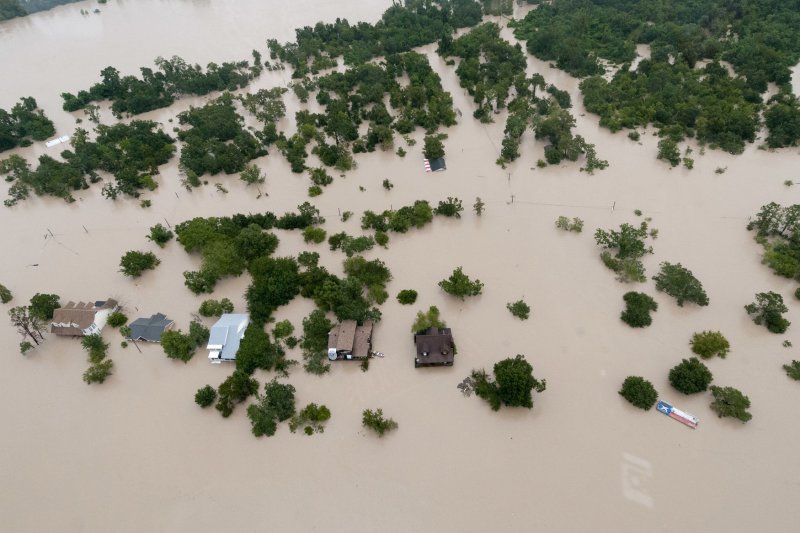Scientists have suggests Hurricane Harvey's slow speed was to blame for its tremendous devastation. Photo by Sgt. 1st Class Malcolm McClendon/U.S. Army National Guard/UPI |
License Photo
June 6 (UPI) -- A scientist at the National Oceanic and Atmospheric Administration has found a link between global warming and the speed of hurricanes.
According to the research of climatologist James Kossin, the rise in global temperatures is leading to a slowdown in the speed of hurricanes and typhoons, allowing them to linger atop coastal communities and inflict more damage.
"Nothing good can come of a slower storm," Kossin told Mashable. "It's safe to say you want them [hurricanes] to get out of your neighborhood as quickly as possible."
Previous research has shown that a warmer climate can hold more water moisture, so when it rains, it rains more. However, scientists have struggled to isolate the impacts of climate change on the characteristics of extreme weather events.
"A lot of the initial research has been focused largely on numbers of tropical cyclones and then of course on intensity because that's the way that we feel the impacts," Christina Patricola, an atmospheric scientist at Lawrence Berkeley National Laboratory, told the Los Angeles Times.
When Hurricane Harvey devastated Houston in 2016, many scientists pointed to the fact that the storm hovered over the area for four days, dropping record amounts of water. It's slow speed made it especially destructive.
To understand the relationship between climate change and hurricane speeds, Kossin analyzed the paths of 7,585 tropical cyclones from 1949 to 2016. He found hurricanes in 2016 moved an average of 10 percent slower than hurricanes in 1949.
Kossin found storms moving across land in the Eastern United States slowed down 20 percent between 1949 and 2016.
Kossin published his findings Wednesday in the journal Nature.
A big storm that drops a lot of rain is more dangerous if it's going slow. A fast storm can distribute its water across a wider surface area, decreasing the chance of extreme flooding. A slow storm increases the risk of damaging floods.
The speed at which hurricanes move is largely dictated by atmospheric circulation, and atmospheric circulation in the tropics has been weakening, especially in the summer, as temperature gradients between the tropics and polar regions decreases.
While the new research suggests hurricanes and typhoons are slowing down over time, more work needs to be done to improve prediction models for how hurricanes may behave in the future.















